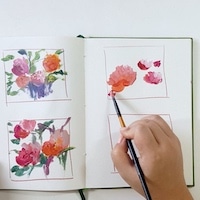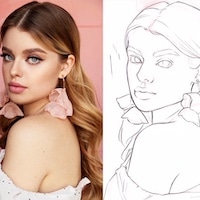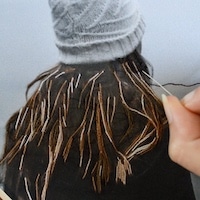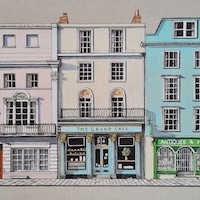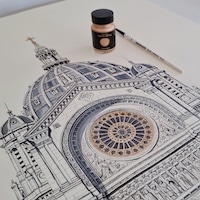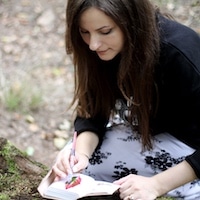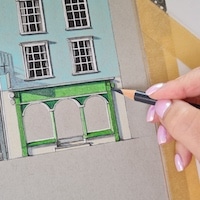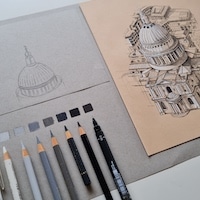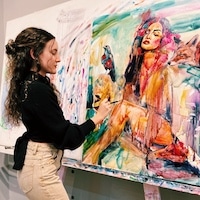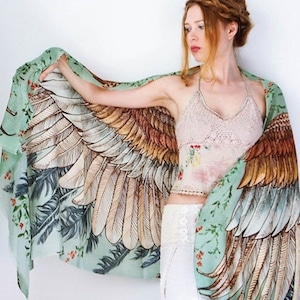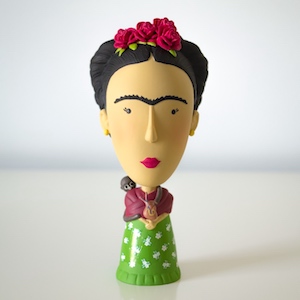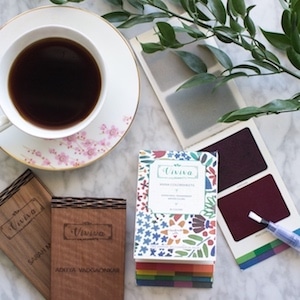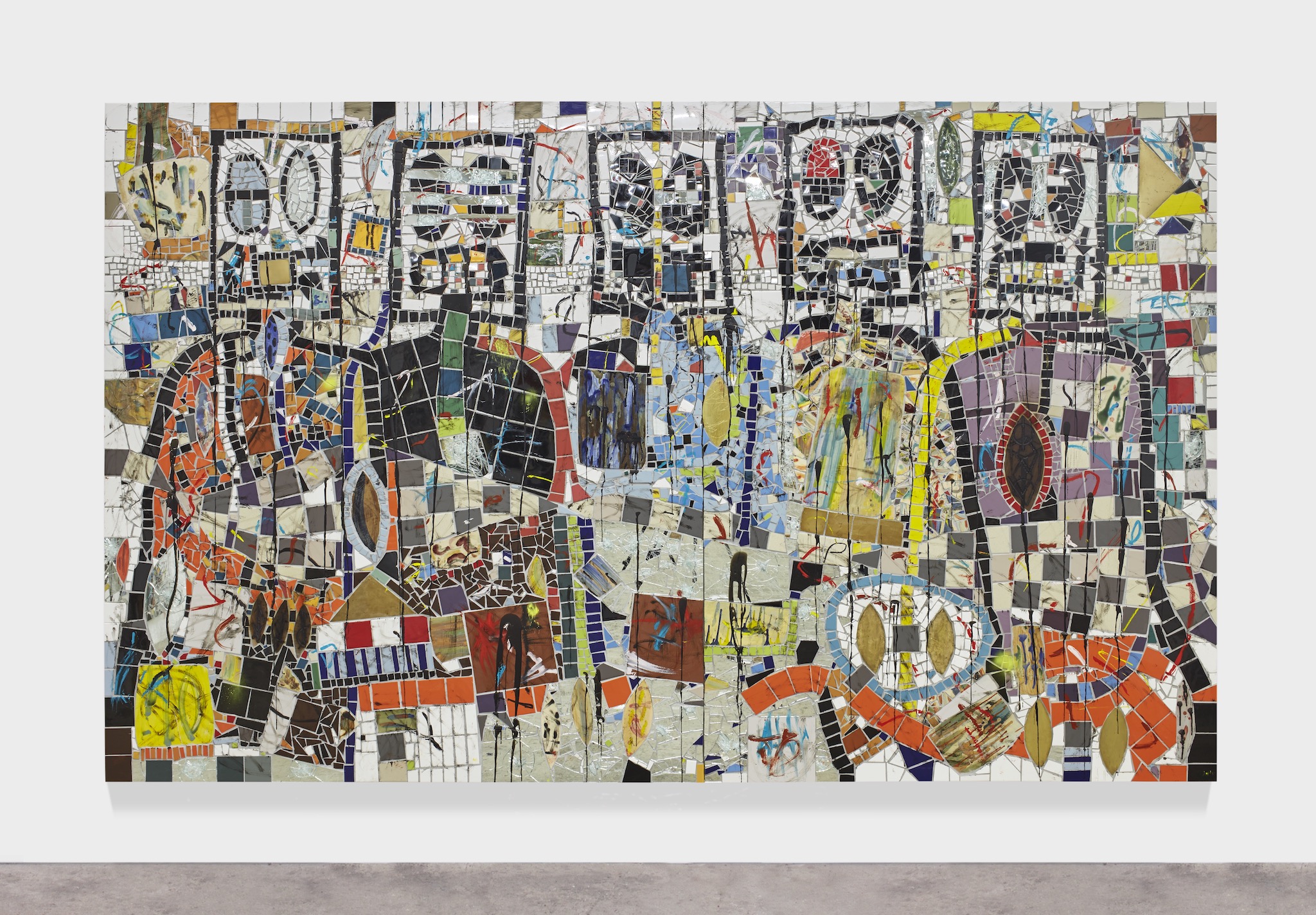
“The Broken Five,” 2019. (Photo: Martin Parsekian, courtesy the Metropolitan Museum of Art)
It only feels natural that the Guggenheim is hosting Rashid Johnson’s largest solo exhibition to date. Monumental in size, experimental in medium, and rigorous in concept, Johnson’s work seems entirely at home inside the museum, where he has exhibited his artwork several times in the past. For those reasons alone, it’s clear that Rashid Johnson: A Poem for Deep Thinkers is not only a homecoming but an incredible expansion of, and glimpse into, the artist’s multidisciplinary practice.
Gathering more than 90 pieces, including some created specifically for the Guggenheim, A Poem for Deep Thinkers offers a sweeping overview of Johnson’s decades-long career. The exhibition showcases everything from large-scale paintings and spray-painted text works to monumental sculptures and exploratory films. Earlier works are also juxtaposed with those from the past few years, anchoring the exhibition with compelling throughlines. God Painting ‘The Spirit,’ for instance, reveals Johnson’s ongoing interest in abstraction and bold colors, complete with strange, circular forms set against a dramatic red backdrop. Untitled Anxious Audience, on the other hand, betrays a fascination with the human form and psyche, depicting several faces that are contorted into unsettling grimaces.
These newer works certainly reflect Johnson’s artistic evolution, but they also cement what subjects and aesthetics have endured for the artist. Self Portrait laying on Jack Johnson’s Grave highlights Johnson’s political underpinnings and his continued interest in Black identity. The photograph is a direct homage to Jack Johnson, the first Black American heavyweight to defeat titleholder James J. Jeffries on July 4, 1910, during an era of intense racial violence. The Crisis of the Negro Intellectual is similar in its theme but differs in execution, displaying household objects resting on a heavily painted shelf. Like Self Portrait, the artwork references other entities beyond itself, this time being Harold Cruse’s influential 1967 book, also titled The Crisis of the Negro Intellectual, that explored Black integrationism and nationalism.
At the heart of the exhibition is Untitled, a new mosaic work showcased on the Guggenheim’s iconic rotunda floor, alongside Rotunda Stage, an interactive space for performances. The stage has become the site of a public-engagement program that takes place every Friday through Monday, featuring collaborations with the Academy of American Poets, DreamYard, Harlem School of the Arts, Urban Word NYC, and the Guggenheim’s poet-in-residence Traci Brimhall, among others. So far, a Grammy Award-winning jazz musician has curated musical performances; Bronx poets and students have presented their work; and Rad(ical) Poetry Consortium fellows hosted a special series of readings.
“This exhibition continues the conversation I’ve always been invested in: one that allows for freedom of expression and awareness of artistic possibilities,” Johnson said in a statement. “For me, medium specificity has never been the goal—it’s about how the project can move freely between different forms.”
While in New York, our editor-in-chief, Eugene Kim, had the opportunity to visit A Poem for Deep Thinkers, as well as public programming tied to the exhibition. “Frank Lloyd Wright’s spiral at New York’s Guggenheim turns the gallery into a path of discovery,” he shares. “During Johnson’s exhibition, hanging plants, integrated poetry, and evocative works reframed the rotunda. Encountering them while ascending and descending the ramp created an intimate connection with the artist.”
Rashid Johnson: A Poem for Deep Thinkers is on view at the Guggenheim in New York through January 18, 2026.
The Guggenheim is currently hosting Rashid Johnson’s largest solo exhibition to date, featuring more than 90 artworks.

Installation view of “Rashid Johnson: A Poem for Deep Thinkers,” held at the Guggenheim in New York. (Photo: David Heald)

“Untitled Escape Collage,” 2018. (Photo: Martin Parsekian, collection of Kathy and Mitchell Jacobson)

“Untitled Anxious Audience,” 2019. (Photo: Martin Parsekian, collection of Clara Wu)

Detail from “Untitled Anxious Audience,” 2019. (Photo: Martin Parsekian, collection of Clara Wu)

Installation view of “Rashid Johnson: A Poem for Deep Thinkers,” held at the Guggenheim in New York. (Photo: David Heald)

“God Painting ‘The Spirit,'” 2025. (Photo: Stephanie Powell, private collection)

“Self Portrait laying on Jack Johnson's Grave,” 2006. (Collection of Dr. Daniel S. Berger)
Rashid Johnson: A Poem for Deep Thinkers is currently on view through January 18, 2026.

Installation view of “Rashid Johnson: A Poem for Deep Thinkers,” held at the Guggenheim in New York. (Photo: David Heald)

“Bruise Painting ‘Honeysuckle Rose,'” 2021. (Photo: Martin Parsekian, private collection)
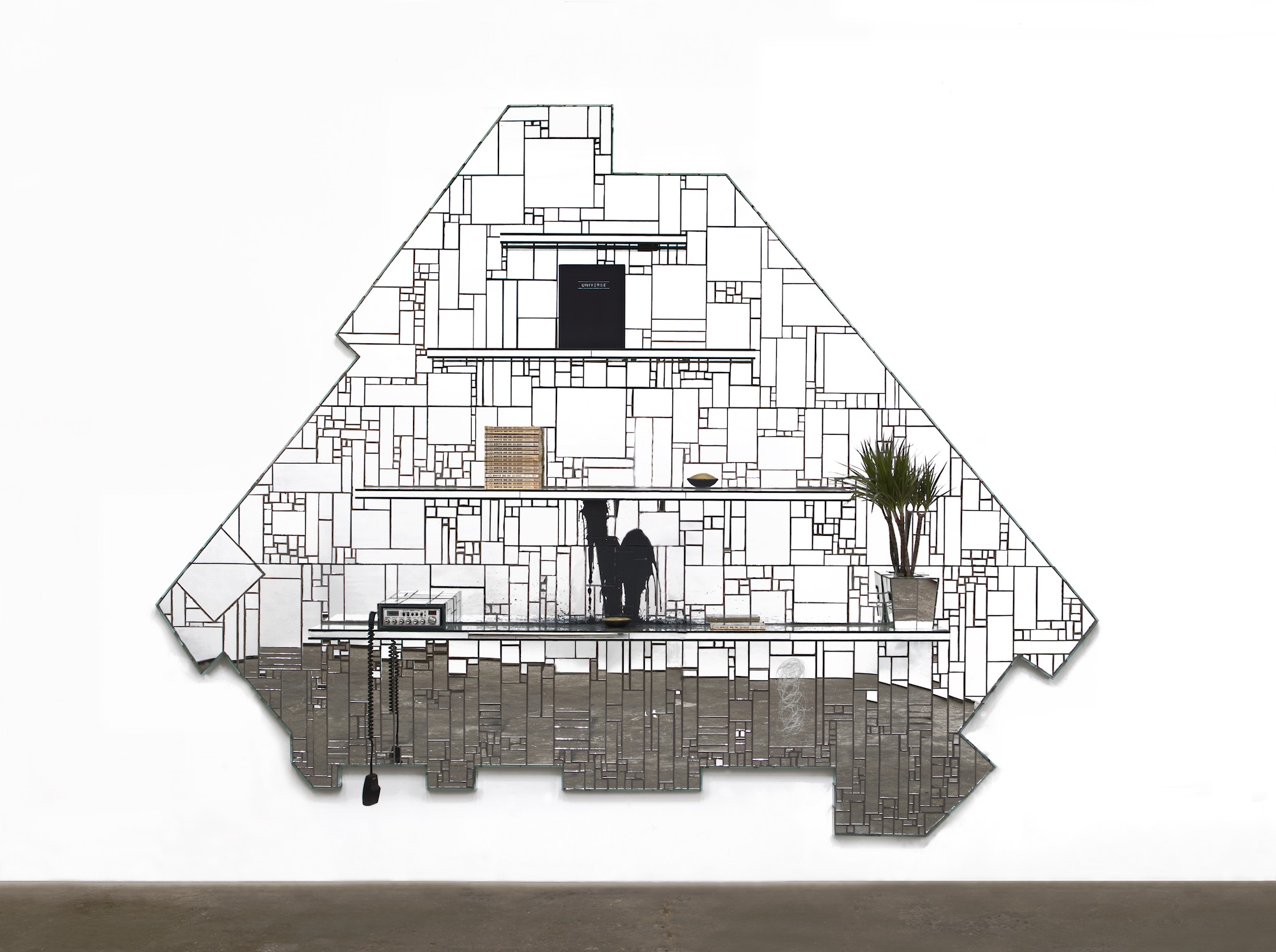
“The Shuttle,” 2011. (Photo: Martin Parsekian, courtesy the Rubell Museum)
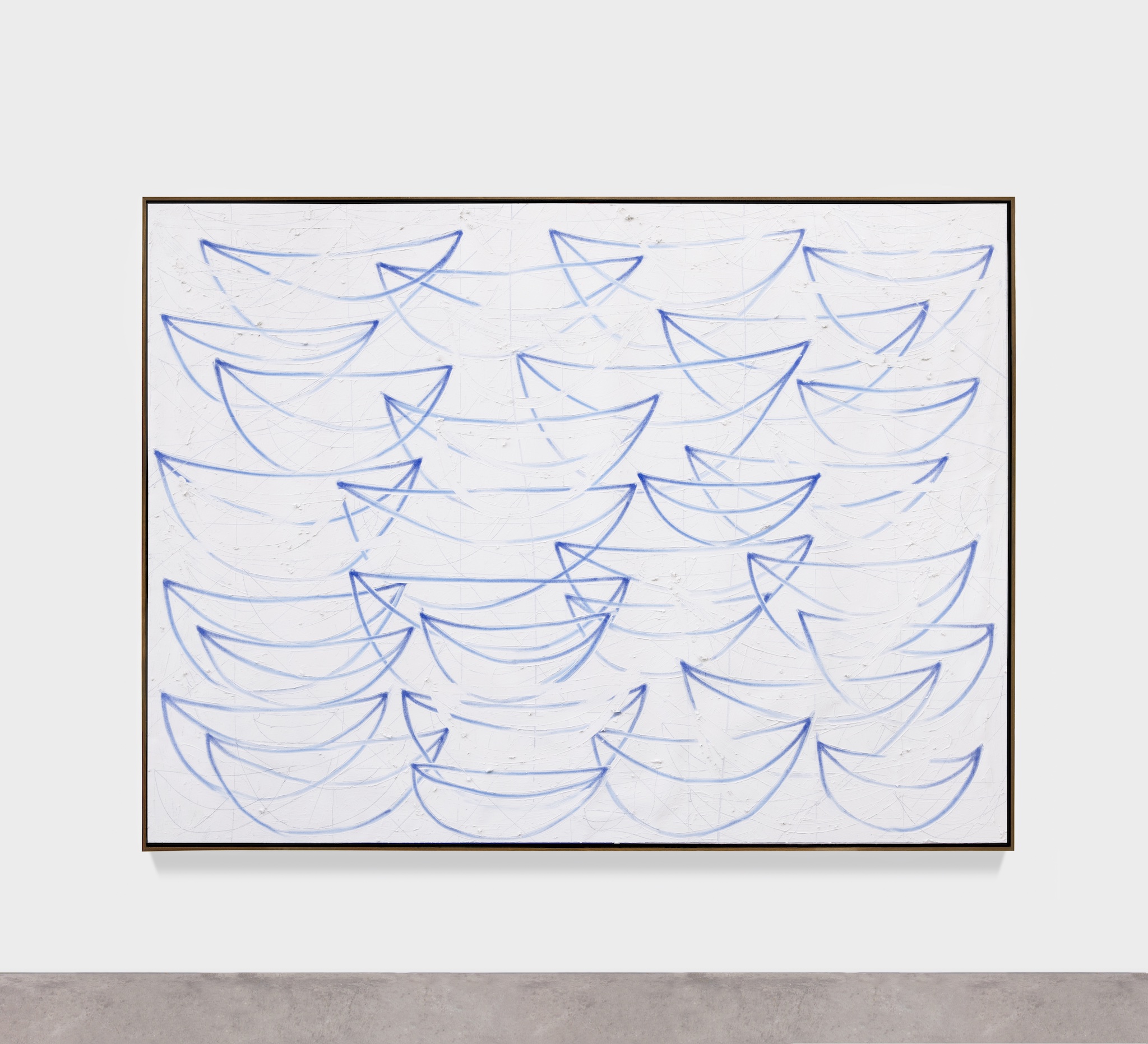
“Seascape ‘Jitter Bug,'” 2022. (Photo: Stephanie Powell, private collection)
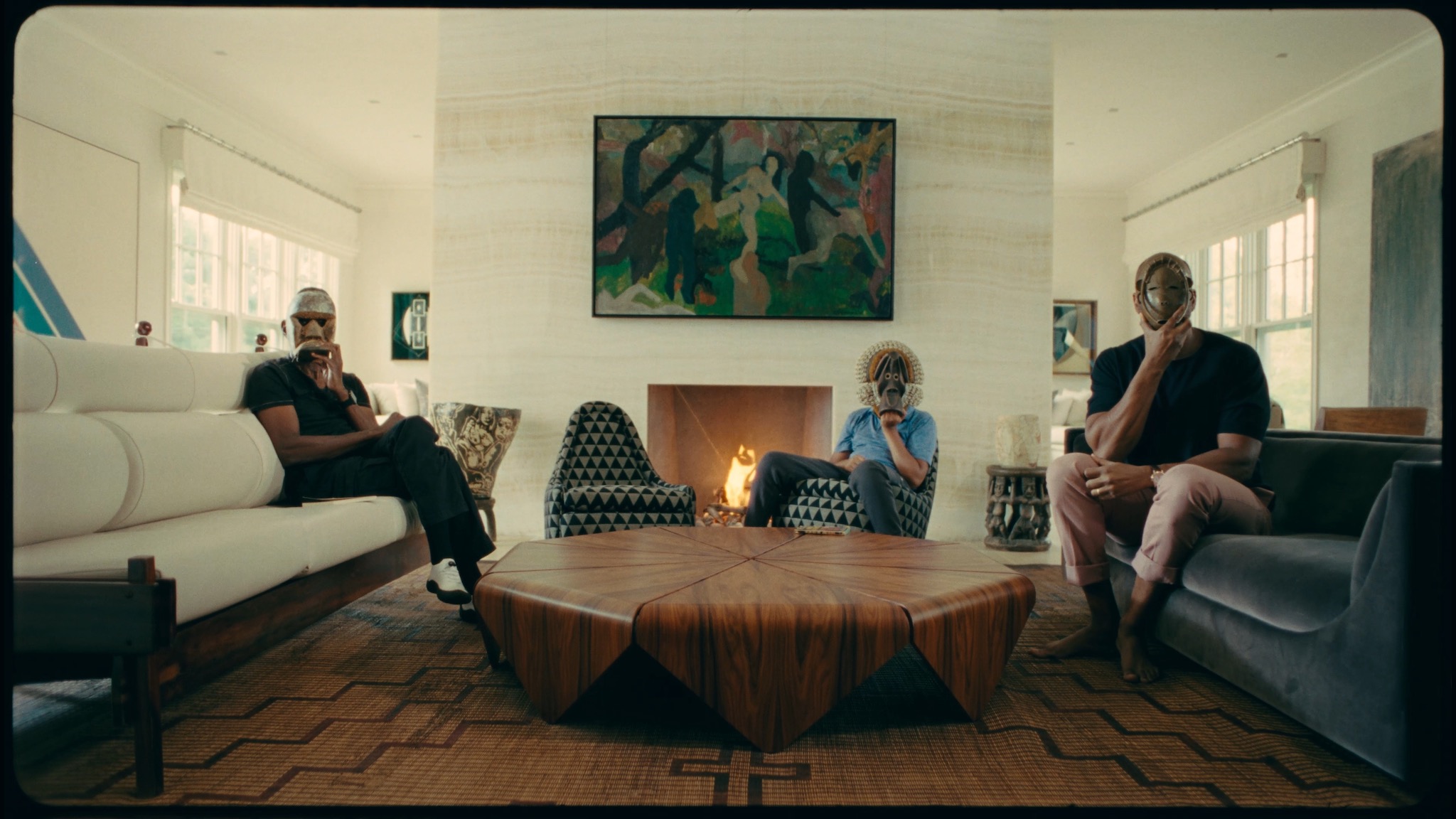
Still from “Sanguine,” 2024. (Courtesy Rashid Johnson)

“Untitled (Shea Butter Table),” 2016. (Photo: Martin Parsekian, private collection)

“The Crisis of the Negro Intellectual (The Power of Healing),” 2008. (Photo: Martin Parsekian, courtesy the Rubell Museum)
Get a peek into Johnson’s exhibition and public programming at the Guggenheim:
View this post on Instagram
















